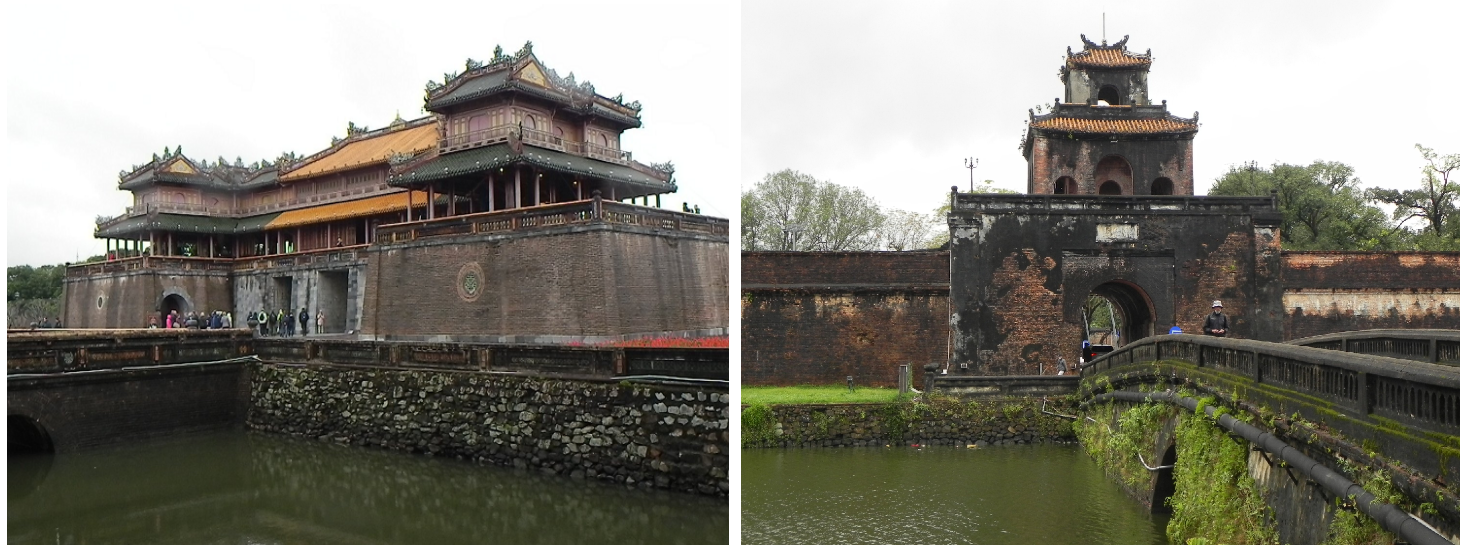
Sandip Hor discovers the intriguing history of Vietnam.
Hanoi and Hue are two sought-after locations in Vietnam, Southeast Asia’s rising star in the tourism circuit.
Since 1010, Hanoi has remained as the nation’s capital except for the 143 years between 1802 and 1945 when Hue snatched the helm as the home of the Nguyen dynasty rulers, the nation’s last royal clan. Both cities stand today as silent witness of the region’s history from imperialism until 1945, followed by the French colonial rule to the subsequent red-flag regime.


The foremost is his mausoleum, perhaps touted as the most significant site of communist Vietnam. Following the traditions of his fellow comrades — Lenin and Mao — the body of Ho Chi Minh, who died in 1969, has been preserved with special chemicals, stored in a glass coffin, and set deep inside a colossal granite edifice, which stands as a location of pilgrimage for the Vietnamese people. A long queue to go inside is testament to the respectful sentiment.

The life of Ho Chi Minh reads like a thriller and there are many museums to narrate this story. He lived in Europe and the United States under several names for over three decades. While in Paris after World War 1, he became influenced by Marxist philosophy and travelled to Russia and China to learn more about communism before being imprisoned by the French for his revolutionary activities. After release, he returned to Vietnam to liberate his country from the French and in 1945 he, like the Americans, declared independence at Ba Dinh Square, located not far from his final resting place. This paved arena in reverence matches Moscow’s Red Square and Beijing’s Tiananmen Square. In 1954, he became the first president of North Vietnam and led the country until he died in 1969, six years before his dream of a unified Vietnam became reality.
Vietnamese people affectionately address him as Bac or Uncle Ho. He was close to the people and led a very simple life. After becoming president, he refused to move into the Presidential Palace, rather shifting to an adjacent modest house called “House of Stilts”, which, like a museum, is now open to the public to see elements of his unassuming lifestyle.
“Have his dreams come true?” is the question that pops up in people’s minds when they confront 21st-century Hanoi.
While searching for answers, they will possibly discover that Hanoi during the post-war period has achieved a perfect balance between heritage and urban development to become an ultramodern world city. Perhaps that’s why Hanoi appeals as modern yet old-fashioned, communist yet capitalist, and cosmopolitan yet quaint.

In contrast, Hue in central Vietnam lives more in past than the present, and thrives by renewing value of its old-fashioned imperial character which creates the unique appeal to draw visitors. It’s also not as busy and fast-paced as other Vietnamese cities.
Established in 1802 as the capital of the Nguyen dynasty monarchs, the city still showcases many well-preserved royal emblems and religious icons, all enshrined by a serene ambience. After establishing Hue in 1802 as the seat of power for the sovereignty, Gia Long, the dynasty’s first monarch, built a citadel as their Imperial City which is the destination’s main attraction. Surrounded by 6m-high walls and a moat for further protection, this 36ha Unesco World Heritage Site showcases several palaces, temples, royal residences, and monuments, some of which were damaged during the Vietnam War, but are now restored to their original form.

The primary entrance to the bastion is through Ngo Mon Gate, which faces the flag tower. An architectural masterpiece, this hugely ornamented structure at the top shows a big drum and bell which for almost 200 years has witnessed every change in the city.
Not to be missed are the Nine Dynastic Urns which then represented the nation’s unity and are now deemed as the nation’s cultural treasures.
After death, the emperors were moved out of the Citadel. Their mausoleums are located beyond city limits and are worth visiting to see how the emperors planned their life after death. Occupying a large area, their architectural ingenuity matches the taste of the individual emperors, reflecting their varying temperaments, philosophies, and priorities.
The tombs don’t just embody the lives and souls of the Nguyen kings. They also recount the story of one of Vietnam’s most engaging historical periods, including imperialism, French colonisation, war atrocities and national reunification.
Travel notebook
Getting there: Fly Air New Zealand (www.airnewzealand.com) to Sydney and Vietnam Airlines (www.vietnamairlines.com) direct from
Sydney to Hanoi. Located about 660km south of Hanoi, Hue can be reached by air and rail.
Stay: Flower Garden Hotel (www.flowergardenhotel.com.vn) in Hanoi and EMM Hotel (www.emmhotels.com) in Hue
Tour operator: Wendy Wu Tours (www.wendywutours.co.nz)











